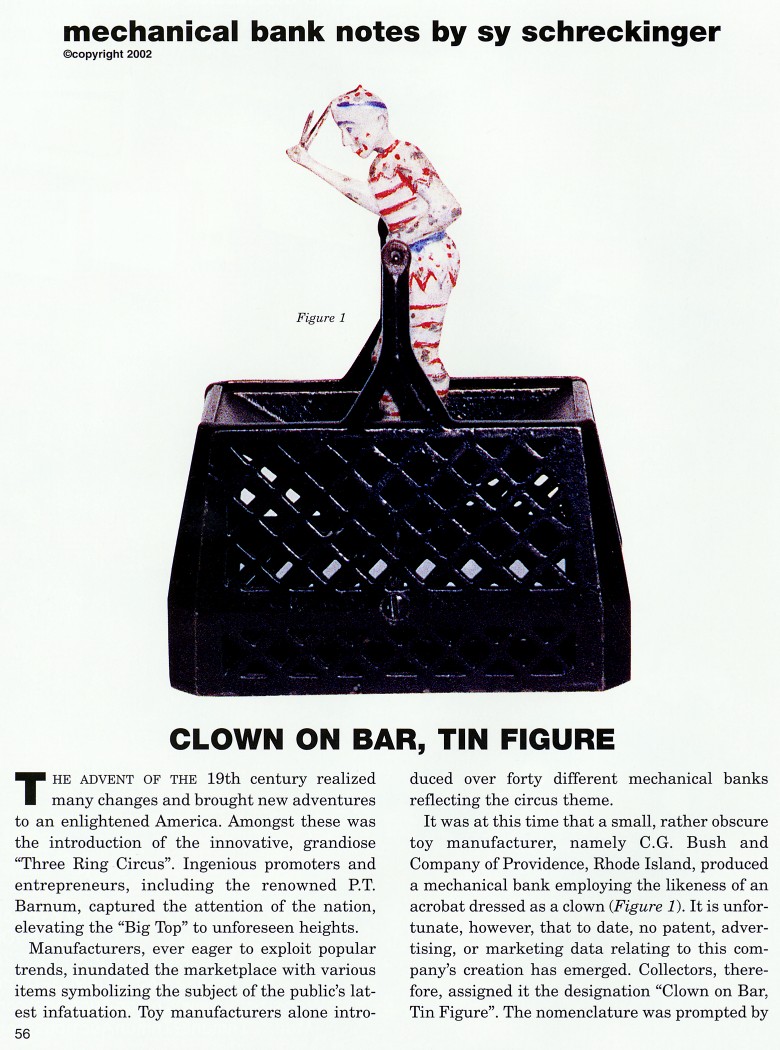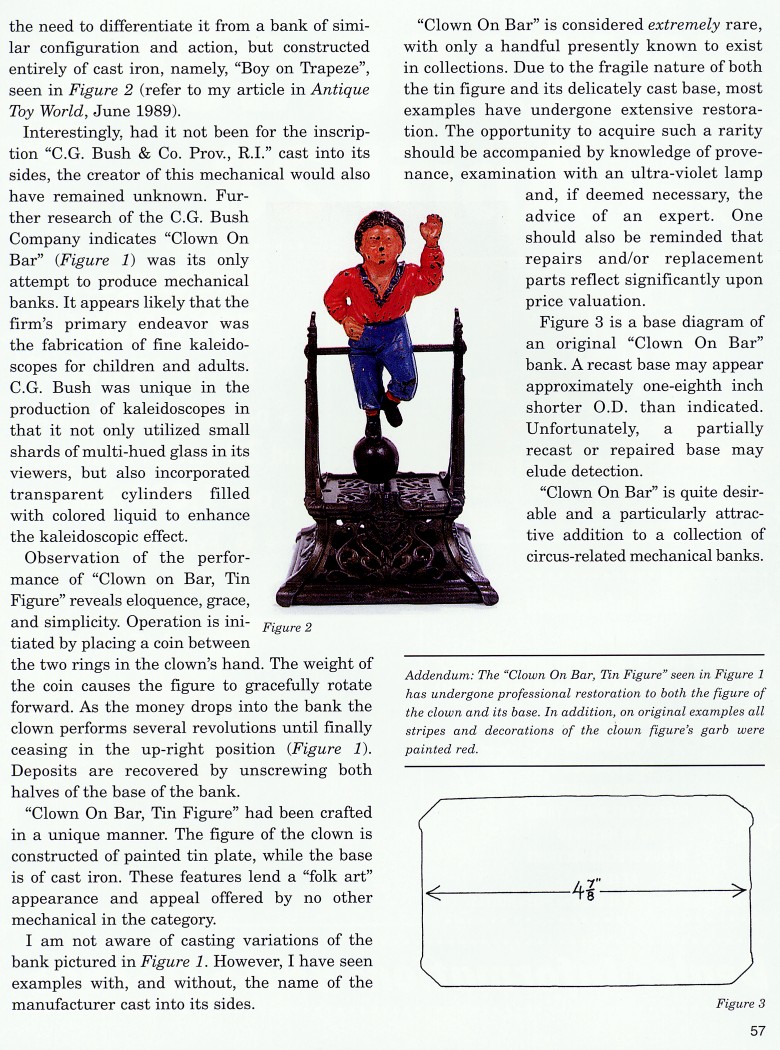|
Clown on Bar, Tin Figure
by Sy Schreckinger – ANTIQUE TOY WORLD Magazine – February, 2002
The advent of the 19th century realized many
changes and brought new adventures to an enlightened America. Amongst
these was the introduction of the innovative, grandiose "Three Ring
Circus". Ingenious promoters and entrepreneurs, including the renowned P.T.
Barnum, captured the attention of the nation, elevating the "Big Top" to
unforeseen heights.
Manufacturers, ever eager to exploit popular trends, inundated the
marketplace with various items symbolizing the subject of the public's
latest infatuation. Toy manufacturers alone introduced over forty
different mechanical banks reflecting the circus theme.
It was at this time that a small, rather obscure toy manufacturer,
namely C.G. Bush and Company of Providence, Rhode Island, produced a
mechanical bank employing the likeness of an acrobat dressed as a clown
(Figure 1). It is unfortunate, however, that to date, no patent,
advertising, or marketing data relating to this company's creation has
emerged. Collectors, therefore, assigned it the designation "Clown on Bar,
Tin Figure". The nomenclature was prompted by the need to differentiate it
from a bank of similar configuration and action, but constructed entirely
of cast iron, namely, "Boy on Trapeze", seen in Figure 2 (refer to my
article in Antique Toy World,
June 1989).
Interestingly, had it not been for the inscription "C.G. Bush & Co.
Prov., R.I." cast into its sides, the creator of this mechanical would
also have remained unknown. Further research of the C.G. Bush Company
indicates "Clown On Bar" (Figure 1) was its only attempt to produce
mechanical banks. It appears likely that the firm's primary endeavor was
the fabrication of fine kaleidoscopes for children and adults. C.G. Bush
was unique in the production of kaleidoscopes in that it not only utilized
small shards of multi-hued glass in its viewers, but also incorporated
transparent cylinders filled with colored liquid to enhance the
kaleidoscopic effect.
Observation of the performance of "Clown on Bar, Tin Figure" reveals
eloquence, grace, and simplicity. Operation is initiated by placing a coin
between the two rings in the clown's hand. The weight of the coin causes
the figure to gracefully rotate forward. As the money drops into the bank
the clown performs several revolutions until finally ceasing in the
up-right position (Figure 1). Deposits are recovered by unscrewing both
halves of the base of the bank.
"Clown On Bar, Tin Figure" had been crafted in a unique manner. The
figure of the clown is constructed of painted tin plate, while the base is
of cast iron. These features lend a "folk art" appearance and appeal
offered by no other mechanical in the category.
I am not aware of casting variations of the bank pictured in Figure
1. However, I have seen examples with, and without, the name of the
manufacturer cast into its sides.
"Clown On Bar" is considered extremely rare, with only a handful
presently known to exist in collections. Due to the fragile nature of both
the tin figure and its delicately cast base, most examples have undergone
extensive restoration. The opportunity to acquire such a rarity should be
accompanied by knowledge of provenance, examination with an ultra-violet
lamp and, if deemed necessary, the advice of an expert. One should also be
reminded that repairs and/or replacement parts reflect significantly upon
price valuation.
Figure 3 is a base diagram of an original "Clown On Bar" bank. A
recast base may appear approximately one-eighth inch shorter O.D. than
indicated. Unfortunately, a partially recast or repaired base may elude
detection.
"Clown On Bar" is quite desirable and a particularly attractive
addition to a collection of circus-related mechanical banks.
Addendum: The "Clown On Bar, Tin Figure" seen in Figure 1 has
undergone professional restoration to both the figure of the clown and its
base. In addition, on original examples all stripes and decorations of the
clown figure's garb were painted red.
|


